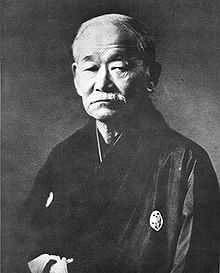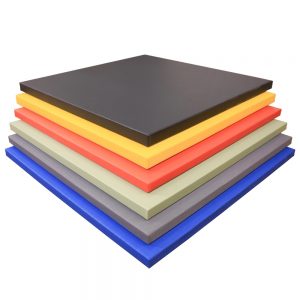
Tatami Mats Respected Flooring By Japanese Sensei
The Ezymat Tatami mats are one of our more popular products we can offer. They are high-quality training mats which are high above the quality standard and we guarantee that any dojo or training facility with different programmes and types of training will have no problem using them. It can be also used as standard flooring for your home, it’s not just for dojos! The truth is that Tatami Mats Respected Flooring By Japanese Sensei’s.
The mats are praised for their durability and stable texture, but the most important reason (often, the most overlooked) is that the Tatami mat boasts a very prominent status and importance among the ancient Dojo keepers and masters throughout the ages.
Tatami mats are traditional mats
With a sacred status and a long-held tradition, the Tatami is one of our most sought after products and it is a high-quality flooring material which guarantees absolute satisfaction. Whether its house flooring you want, or you require if for your dojo, the Ezymats flooring with a tatami finish is all you need.
It is a well-known fact that the Tatami mat has had a cult status throughout the ages. Today, in modern day Japan, there’s not much difference either, and it is valued greatly among the masters of ceremony in Japan today. We have an important duty to explore and examine why the Tatami has the sacred status and is deemed important in Japan’s culture. It has a lush history, from the days when the Tatami was firstly used, through the days when the technique for manufacture was improving, and to the era of the perfect Tatami-weaving technique.
The manufacturing procedure uses up to seven or eight thousand pieces of rush grass to make up a Tatami mat. They are made of a very sturdy woven grass rice texture which was rolled around rice straws as a core. The intricate weaving technique makes sure they are nice and tight, and highly durable.
The big cities like Fukuoka and Hiroshima are known for their vast areas of rush grass, called Igusa. They are the main cities for rush production used for making Tatami mats, and the sped-up industrialization has hastened its production and manufacture greatly.
History of tatami mats
Tatami mats have been generally used since the 8th century Nara Period. The word “Tatami” is very old and the oldest record of the word usage is in one of the oldest Kojiki books, the ancient history books of Japan. The Heian period around the 9th century until the 1200s is the period when the Tatami mats were generally used, and in the Muromachi period, the Tatami mats became even thicker and more used by the Japanese noblemen.
Things were getting pretty serious around the late Muromachi period during the 16th century. Tatami mats were popping up everywhere, and they covered entire floors with intricate patterns of cut up Tatami mats.
Using odd patterns was regarded as bad luck and ill omen will follow the family if they weren’t placed in a very strict order, as told by the grandmasters and noblemen. One of the Tatami mats which the room consisted of is always half measure, while the others are full measure. The rooms were called “Zashiki”, which meant “spread rooms for sitting”.
Around this era of grand lifestyle, the Shoin-Zukuri style began emerging as a popular and fashionable choice for furniture and architecture, a staple of traditional Japanese furniture arrangement. Paper screens layered with intricate artwork and wooden frames, square wooden pillars, and of course, Tatami mats, finely arranged.
The great masters of the martial arts, throughout the ages, have showed nothing but absolute respect and almost a feeling of worship to the sacred status of the Tatami mat. All of which followed a strict codex and etiquette. The Zen masters always clean and tend to the Tatami mats, always keeping them nice and tidy. But, despite the fallout of the decline of Tatami mats around the 20th century, the noble Tatami flooring is still a part of the Japanese national identity.
Modern tatami mats by Ezy Mats
Ezymats Tatami mats are available in 40mm thickness and a density of 230kg/cbm, with measures of 1m x 2m surfaces. Our mats are with a Tatami texture and finish, they are not entirely made of Tatami straws but they are made with heavy duty vinyl with an inner compressed sponge and an anti-skid bottom, and they can be separately ordered as 1m x 1m. Our Tatami Mats are perect for dojos and martial arts centres. They can withstand any high-impact activities and sports, and they last for a long time, all thanks to the great durability and material.
We at Ezymats supply EVA foam mats, MMA mats, wall mats, and of course, Tatami mats throughout Australia, and we have warehouses and shops in Sydney and Melbourne. You can always choose the mats which you need the most, and the mats that are most suited for your dojos.
Our Ezymats Tatami mats, are a perfect blend between the old traditional feel and the new modern technological advances which make the texture durable and fine. What’s more, they have a very pleasant smell while the smooth surface ensures no skin burns upon falling impacts.
Essential Flooring For Any Dojo
To sum up, the Ezymats Tatami mats are the essential flooring material for your dojo or martial art centre. Basically, they are known as the fundamental part of the traditional Japanese home, as the home itself is nothing without the comfortable support of the Tatami. They make every home a pleasant abode.
We at Ezymats value the Tatami’s sacred status as an object of great importance and national identity. The durable and high-quality flooring material never fails to impress even the most skeptic of dojo masters. If you are looking for very durable and high-quality Tatami mats, then look no further than the Ezy Mats Tatami.
So if you Tatami Mats Respected Flooring By Japanese Sensei’s then look no further.
Tatami Colour Options



Follow us:


